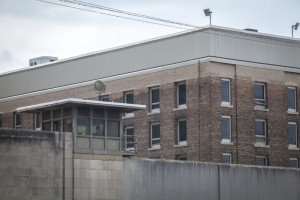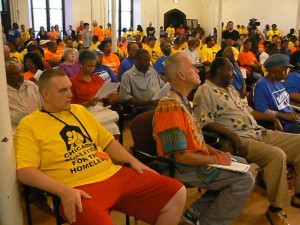By Nancy Cambria
Summer is one of the trickiest times to run a profitable small child-care business.
On average, about a quarter of a child-care center’s children move on to kindergarten. Ideally those empty slots are filled by a new crop of infants and toddlers, so business — and revenue — can continue as usual.
But in Illinois, this summer is shaping up to be particularly cruel for the child-care providers who serve the working poor and the children and parents who need their care.
A $4 billion deficit and a political stalemate surrounding the state budget has prompted Republican Gov. Bruce Rauner to order an emergency freeze on most new child-care subsidy enrollment. Under it, the vast majority of families earning a little more than $10,000 year will not qualify.
As a result, independent child cares in low-income communities are shutting down or are nearing the end, fearing they will not have nearly enough children to fill those August slots with needed younger children.
They and child-care advocates say working, low-income parents will not be able to afford child care without the subsidies, and the expected closures will severely damage the state’s child-care supply for the poor.
Some child-care providers consider the freeze the end of the line after years of dealing with a state subsidy system that more than once has run out of money because of budget shortfalls and delayed state budgets. As recently as March, child-care providers scrambled to operate for several weeks without being paid.
This month, Leonard Richie, the 17-year owner of Leonard Bo Peep Preschool Academy in Brooklyn, decided to let go staff and clients and shutter his child care licensed for 50 children.
He said the state could not guarantee that it could pay him for the summer.
“This isn’t the first time they’ve done this. Every time it’s time for a new budget, come July the first thing they stop paying is the child-care subsidy,” he said. “It punishes the poor.”
Richie said he was getting out of day care for good and going into the gourmet hot beverage vending machine business.
Children’s Home and Aid, an Illinois agency contracted to administer the subsidies in Southern Illinois, knows of three centers that have closed and one more that will close in the fall. It expects dozens of smaller child cares to shutter in the Metro East area as the legislative problem moves into the fall.
“It’s just only a matter of time as the state budget crisis continues and centers are not paid,” said Renae Storey, of the agency in Granite City, who said parents would be forced to leave their children in unsafe or questionable child-care situations or quit their jobs.
“This is just a giant step backwards in families’ achieving self sufficiency,” she said.
Last year, about 600 providers in the southern region received about $36 million in subsidies to care for 15,000 low-income children.
The new income qualifying rules — 50 percent of the poverty level — have, for now, put Illinois dead last in the nation for access to the Federal Child Care Assistance Program, which gives states the right to set its income thresholds for participation.
A family of three can earn no more than $10,045 a year to qualify even though the federal poverty level for that family is $20,090. Previously, Illinois families of three could earn up to $37,166 annually to qualify. In Missouri, lawmakers recently approved an increase in income eligibility. A family of three can get a full subsidy if they earn less than $27,724 — 138 percent of the poverty level.
Families in Illinois essentially have to be poorer than anywhere else in the country to apply and qualify, said Dan Lesser, director for the office on Economic Justice at the Sargent Shriver National Center on Poverty Law, based in Chicago. Even holding a minimum-wage, part-time job at Walmart would bump most of them out of the program, he said.
The Center on Poverty Law anticipates the new income threshold, along with other restrictions, will weed out 90 percent of the working families that would previously qualify for the subsidy and force parents — most of them single mothers — out of the job sector.
“This is a program for working parents, and they’ve just eliminated working parents as an eligible category,” Lesser said. “They’ve undermined the whole purpose of the program with these changes.”
Under the freeze, parents on Temporary Assistance for Needy Families, teen mothers in school and parents with disabled children would still qualify for the program under the previous standards. The terms of the freeze also enable parents with higher incomes who were previously qualified to keep the assistance if they drop off and need to re-enroll within the year.
On July 1, dealing with a state budget that has yet to gain legislative approval and massive budget shortfalls, Rauner looked to the state-funded match of the federal Child Care Assistance Program for cuts and savings and ordered the freeze.
Historically, the state has funded about $355 million annually to the state’s nearly $1 billion annual subsidy program, with the federal Department of Health and Human Services funding the rest.
Though the state has not given child-care advocates an actual estimate as to how many children they expect to shed from the subsidy rolls, Samir Tanna of Illinois Action for Children said that state had indicated it could save about $5.3 million per month and an additional $47 million annually from other changes to co-pay and background check standard.
Illinois could ultimately opt at any time to reverse the income thresholds, but when and if that will happen remains unknown. In an email, a state spokesman with the Illinois Department of Human Services could not discuss whether it would be lifted at all, “until there is a balanced budget in place.”
Tanna said the temporary freeze — regardless of duration — would affect thousands of child cares and dismantle the supply chain of providers who cater to poor families, leaving poor areas with a dearth of licensed providers.
Lesser, of the Shriver Center, is worried about the worst-case scenario: Even though child-care subsidies had broad support in Congress during their federal reauthorization last year, Illinois, on its own, may be setting an example for other cash-strapped states in the country to follow.
“I think it does have national implication to dismantle a state’s child-care program,” he said of Illinois.
ILLINOIS CHILD CARE CRISIS
Child care subsidies help low-income, working parents and students afford day care. In Illinois they:
• Support about 155,000 children annually.
• Cost about $1 billion annually: 40 percent state money, 60 percent federal.
To save money, the state has temporarily changed its family income qualifications:
• Prior to July 1, income capped at 185 percent of the poverty level or $37,166 for a family of three.
• After July 1, income capped at 50 percent of the poverty level: $10,045 for a family of three.
![]() is bad? We just got a new snap shot today and the number is unimaginable.
is bad? We just got a new snap shot today and the number is unimaginable.![]() the Connections for the Homeless shelter in Evanston, says it used to be “very, very busy in the morning,” but not now.
the Connections for the Homeless shelter in Evanston, says it used to be “very, very busy in the morning,” but not now.![]() ,” Loellbach says.
,” Loellbach says.![]() when they need to, to come in and see a case manager,” Loellbach says.
when they need to, to come in and see a case manager,” Loellbach says.![]() in July.
in July.![]() ,” she says.
,” she says.![]() bond debt.
bond debt.![]() footing,” Munger says.
footing,” Munger says.![]() hike expired and current spending levels are based on having the higher tax, so yet again Illinois is spending money it doesn’t have.
hike expired and current spending levels are based on having the higher tax, so yet again Illinois is spending money it doesn’t have.



